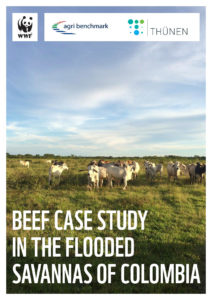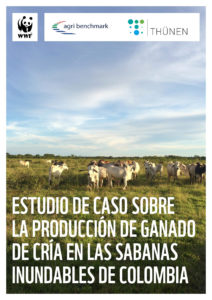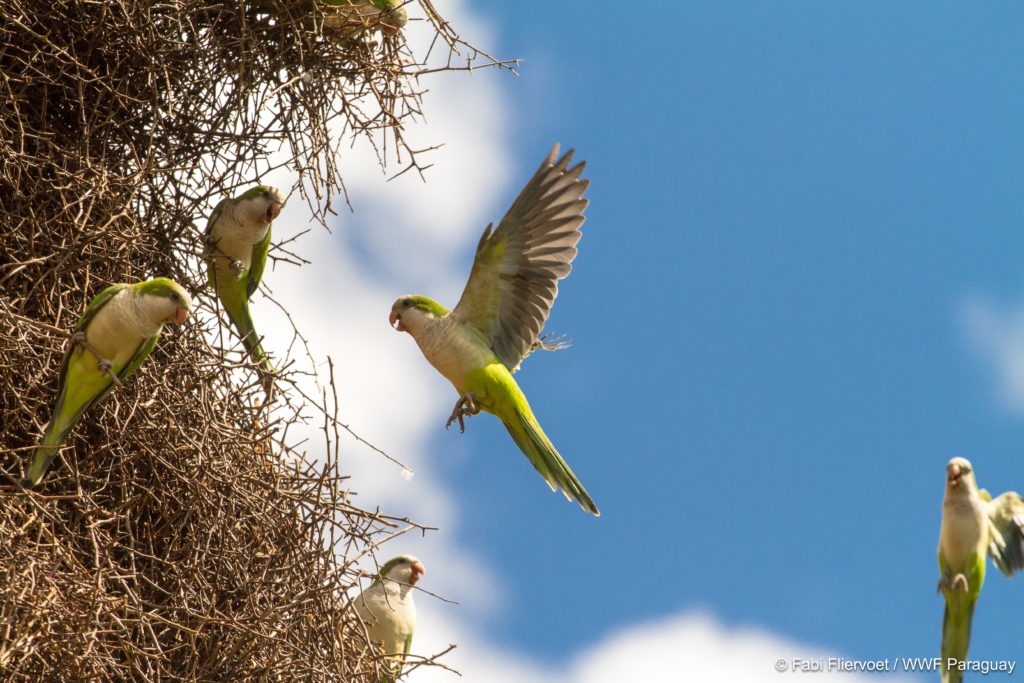Globil Website with collected information, data and maps from Sulu for the Orinoquia
(in Spanish)
https://sulu-panda.hub.arcgis.com
The Key Natural Infrastructure of the Colombian Orinoquia Region. Methodology Update on the SuLu Map
(English and Spanish version)
A Carbon Map for the Project Region in Paraguay
published by Dr. Mareike Söder, Kiel Institute for the World Economy
Method for Land Use Planning including decisión tree
(in Spanish)
Aproximación a la planificación espacial para el desarrollo sostenible en el Pantanal paraguayo
https://www.researchgate.net/publication/
Earth Observation Atlas
https://wwflac.awsassets.panda.org/downloads/atlaschaco_digita_baja.pdf
La metodología Sulu: una mirada integral a la macro cuenca de la Orinoquia
https://www.wwf.org.co/sala_redaccion/publicaciones_new/?uNewsID=365587
Savannahs Module for Norecco-Climate Leadership E-learning School jointly with University, Las sabanas de la Orinoquia en el contexto del cambio climático
https://sulu-panda.hub.arcgis.com/pages/recursos#
Videos:
“Conoce la Orinoquia y su impresionante diversidad”
“Las sabanas colombianas que enamoran”
“Livestock and conservation in the floodplain savannah of Colombia’s Orinoco region: a sui generis climate smart model”
https://www.wwf.org.co/?uNewsID=357412
Aforo de la producción de forrajes nativos de la sabana inundable, reserva natural de la sociedad civil La Esperanza
https://sulu-panda.hub.arcgis.com/pages/recursos#
“Low-carbon best management practices associated with sustainable palm oil production in Colombia”
(Guía de mejores prácticas bajas en carbono. Asociadas de la producción de aceite de palma sostenible en Colombia)
https://www.wwf.org.co/sala_redaccion/publicaciones_new/?uNewsID=365539
“Beef Case Study in the flooded Savannas of Colombia”
(English and Spanish version)
Cattle ranching in the flooded savannas can produce agricultural output while at the same time managing natural resources in a sustainable way. These systems are under threat from the expansion of crop production systems like palm oil and rice, which are usually more profitable on a per ha basis. Improving the profitability of cattle ranching by implementing Best Management Practices (BMPs) could reduce the risk of land use change and its negative impacts on biodiversity and the environment.

 The case study carried out in the Yopal region of Colombia, in close cooperation with producers and regional experts (focus groups), demonstrates the potential of such BMPs.
The case study carried out in the Yopal region of Colombia, in close cooperation with producers and regional experts (focus groups), demonstrates the potential of such BMPs.
Download of the studies:
“Beef case study in the Dry Chaco of Paraguay”
(English and Spanish version)
“Beef case study in the flooded Palmar of Paraguay”
(English and Spanish version)
Scientific articles covering one of the pilot sites
http://mastozoologiamexicana.com/ojs/index.php/theryanotes/article/view/35
Scientific article: Biodiversity in Grasslands and Savannas
“Grasslands and savannah ecosystems-
an urgent need for conservation and sustainable management”
The report draws together information from around the world on the current status of some key grasslands and savannahs, describes how WWF is working to conserve these regions and introduces a new strategy to halt and reverse the losses summarised above.

IUCN Motion “010 – Protecting and restoring endangered grassland and savannah ecosystems”
https://www.iucncongress2020.org/motion/010
Article in Restoration Ecology: “Grasslands and savannahs in the UN Decade on Ecosystem Restoration”
Download of the full paper: https://onlinelibrary.wiley.com/doi/epdf/10.1111/rec.13272
“A Framework for Community-based Governance in Grasslands and Savannahs of South America”
In 2020 Luca Eufemia successfully defended his dissertation at the Life Sciences Faculty of the Humboldt University of Berlin. He is now “Dr. rer. agr.”
His thesis “A Framework for Community-based Governance in Grasslands and Savannahs of South America” has been developed within and supported by the Sulu project
Within his work he develops the Community-Based Governance (CBG), a bottom-up organizational model, ought to increase the participation of local groups in the planning, research, development, management, and formulation of policies and strategies for the wider community. It follows a comparative approach of two selected areas of South America in order to structure the complexity of governance processes: the Colombian Llanos and the Paraguayan Pantanal.
Beyond the development of a specific framework for CBG, two practical and methodological tools are generated. The Community-Based Governance Manual (CBGM), including a case study of the Colombian Llanos, and the Guidelines to Strengthen CBG in the Paraguayan Pantanal (CBGG) seek to promote the political, economic, and social analysis of community actors as well as scenarios addressing the socio-environmental and socio-economic problems that affect them. CBGM and CBGG may be regarded as concrete and tangible impacts on the field, as well as valid outlooks on expected future development of local and environmental governance models.
The Community-Based Governance Manual (CBGM)
The Community-Based Governance Manual (CBGM)” presents Community-based Governance (CBG) as a possible key to understand the socio-political-economic perspectives of local groups. The manual has the objective to 1. offer a practical, methodological and concise plan of action for practitioners and 2. presents the perspectives of the community members of the Municipality of Paz de Ariporo, located in the flooded savannas of the Colombian Llanos, in eastern Colombia in the Orinoco River basin through a case study.
Synthesis of Environmental Research Knowledge: The Case of Paraguayan Pantanal Tropical Wetlands
by Luca Eufemia, Michelle Bonatti & Stefan Sieber
Abstract:
The Paraguayan Pantanal offers a valuable case of research regarding natural resource management in tropical wetlands. It is one of the world´s largest wetland of globally important ecological and cultural value that is threatened from environmental exploitations. Paradoxically, this area is rarely scientifically investigated. Therefore, in this paper, this case was chosen to identify literature indirectly related to the area and to highlight the dominant research trends and corresponding gaps. This research was conducted to cluster the available science-based research of Pantanal´s tropical wetlands in order to advocate for more environmental governance focus.
Community Based Governance And Sustainability in the Paraguayan Pantanal
(Luca Eufemia, Izabela Schlindwein, Michelle Bonatti, Sabeth Tara Bayer and Stefan Sieber)
Published: Journal of Sustainability https://www.mdpi.com/2071-1050/11/19/5158/htm
Abstract: The megadiverse biome of the Paraguayan Pantanal is in danger due to the expansion of cattle ranching and agricultural frontiers that threaten not only the fragile equilibrium of natural resources, but also that of local governance and cultural identities. As a consequence, weak governance stresses the relations between natural resource-dependent communities, generating socio-environmental conflicts. This perception study seeks to find community-based governance models for sustainability in the context of Paraguayan wetlands. According to the organizational principles of community-based natural resource management (CBNRM), we applied qualitative approaches with the use of the Governance Analytical Framework (GAF) to identify problems and social norms. Our findings suggest that the Yshiro indigenous self-organized group (Unión de las Comunidades Indígenas de la Nación Yshiro (UCINY)) can be considered as a model for community-based governance. Besides, we discovered that this specific governance model is highly threatened by the impact of the national neo-extractive economy.
Collective Perception of Anthropic and Extractive Interventions in the Colombian Llanos
(Luca Eufemia, Hector Morales, Michelle Bonatti, Maximilian Graser, Marcos Lana and Stefan Sieber)
Abstract: Increasingly, the developmental model of anthropic and extractive interventions is a global concern. Its impacts are challenging not only the precarious equilibrium of natural resources but also the one of local communities and identities. The case of the Colombian Llanos shows how the local culture of the Cultura Llanera (CL) is deep-rooted with natural resources, their use and their management. Throughout the use of a survey based on the Governance Analytical Framework (GAF), this paper presents and discusses shared problems and social norms. The collective perception of local groups shows that the CL, in particular traditional livestock practices in flooded savannahs, is a key element for the sustainable development of the region. Furthermore, it reveals that agricultural and extractive activities, primarily rice and oil, are considered the main threats to both the ecosystem and the protection of the CL.
Colombia’s rural development must honour peace agreement
We are happy to share with you the release of a correspondence in “nature”, the international journal of science, by our SuLu 2 project partner “zalf”, mentioning our land use change project in Colombia. Within the WWF SuLu2 project, this contribution aims to further the investigation of sustainable land use management practices. It does this by raising awareness about the need for sustainable land use guidelines for the areas included in the First Agricultural Frontier in Colombia, the first milestone of the peace agreement.
Read more on the website of the website of the Leibniz Centre for Agricultural Landscape Research (ZALF), on the website of nature or directly here in the download section: Zalf_correspondence in nature journal_Aug_2018
Sehnsucht nach Savanne, WWF Magazin



